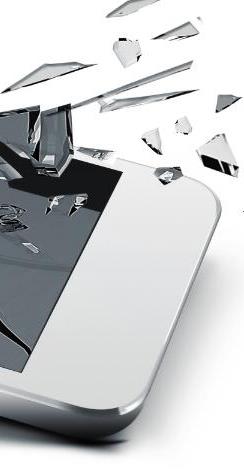
 broken smartphone screens harm productivity in the corporate world. approximately half of all smartphone users will suffer a damaged screen at some point in their lives, and this damage will occur for a variety of reasons such as falling out of the owner’s pocket, sitting on it, or throwing it against the wall (little wonder). My phone, an iPhone 6 Plus, recently underwent its own trauma, slipping out of my hand and onto a cobblestone sidewalk for no other reason than the fact that i have twitchy fingers. I spent the next few hours cursing myself. and then, i began to review my options for repairing the screen quickly and cheaply.
broken smartphone screens harm productivity in the corporate world. approximately half of all smartphone users will suffer a damaged screen at some point in their lives, and this damage will occur for a variety of reasons such as falling out of the owner’s pocket, sitting on it, or throwing it against the wall (little wonder). My phone, an iPhone 6 Plus, recently underwent its own trauma, slipping out of my hand and onto a cobblestone sidewalk for no other reason than the fact that i have twitchy fingers. I spent the next few hours cursing myself. and then, i began to review my options for repairing the screen quickly and cheaply.


smartphones are expensive enough as it is, and the last thing i wanted to do was spend an unnecessarily large amount of money. i could have sent the phone to my local authorised apple reseller, but this would have required me being without my phone for almost two weeks. local hole-in-the-wall electronics shops could fix it within a few hours’ time, but the fees were too steep to justify the expense. with these two options eliminated, i began to ponder the possibility fixing the screen myself – no special tools are required, tutorial videos exist on Youtube, and new iPhone screens are available on the internet for reasonable prices.
but do those prices guarantee reasonable quality? brands pour themselves into building trust and securing high reputations for offering excellent goods and services. that’s what we all expect when buying online, but it is not always what we get. online marketplaces such as
Amazon, eBay and Allegro are absolutely flooded with iPhone screens of varying degrees of quality. While certified Apple replacement screens are available, so too are ones that are made cheaply and can malfunction or break easily. sufferers of cracked screens looking to buy a cheap diY remedy are at risk of purchasing substandard goods made by third-party companies with no regard for apple’s standards.
how can consumers watch their own backs?
they can better educate themselves in what to look out for. small, tell-tale signs such as cable markings and the use of weasel-words in descriptions of the product make all the difference in being able to tell the difference between a certified Apple replacement screen and a cheap knock-off.
the prevalence of counterfeit screens isn’t just maddening for consumers, it’s brand-damaging for online retailers. Fake goods transactions, when refunds are unavailable, leave consumers feeling betrayed by the digital storefront from which they were purchased, and it is usually these online shops that bear the brunt of consumer frustration. in reaction, online shops have found that they can no longer simply be the arena where these transactions happen – they must now be the referees of fair play. amazon, for example, now requires merchants to prove that they have the permission of a parent brand to sell merchandise on its site. additionally, the company is also actively suing those who sell counterfeit goods online. these visible steps to right previous wrongs are repairing the trust of consumers.

accidents happen, and there is no way to fully prevent broken smartphone screens. but online retail brands understand that they are trusted to be a place that enables the fixing of such accidents as conveniently — and honestly – as possible.

